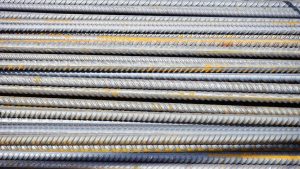The construction industry is on alert as the Donald Trump administration’s recent tariff activity threatens to disrupt the market.
As of Feb. 3, the Trump administration imposed tariffs on China while granting a 30-day reprieve to Canada and Mexico, thanks to their placing additional security at their respective borders with the U.S.
“The relationship between the U.S. and its North American partners is fundamentally different from that between the U.S. and China,” ConstructConnect Chief Economist Michael Guckes said.
Guckes added, “As a result, the supply chain risks to American construction firms sourcing from China in 2025 and potentially beyond could look very different from their exposure to Canada and Mexico.”
Canada and Mexico
Recent decisions by elected leaders to use tariffs of any type “will create market disruptions that hurt both the U.S. and Canadian economies, with construction being no exception,” Guckes said following a volley of news on tariffs in the past few days.
The fluid character of America’s tariff announcements “suggests that the U.S. administration is using economic levers of power to achieve non-economic outcomes,” Guckes noted.
This leverage is evident in the executive orders and White House communications that connect drug flows and illegal immigration to international trade.
Guckes added, “We believe the present tariff situation is designed to serve only as a short-lived opening move of a much larger and long-lasting strategic plan for the Trump administration, which is ultimately pro-business and pro-growth.”
Summing up two rapidly evolving days of tariff news from the U.S. administration and our trade partners, Guckes said, “For this reason, ConstructConnect maintains its positive outlook for the U.S. and Canadian construction economies for 2025.”
“Our expectations continue to be built on Canada and the U.S. finding mutually agreeable ways to thwart illegal immigration, drugs, and any other perceived maladies.”
China
Tariffs on Chinese goods went into effect after midnight ET on Tuesday. China responded by announcing 10 per cent to 15 per cent tariffs on around 80 products, effective February 10, Bloomberg reported.
Kermit Baker, Chief Economist of the American Institute of Architects, said Mexico, Canada, and China, our three largest trading partners, together “accounted for over 40 per cent of US imports in 2023, the most recent year available. These three countries also account for a significant share of U.S. exports, so the possibility of retaliation is a serious concern.”
Baker added that the construction industry “relies heavily on materials and products sourced in these three countries, including cement, gypsum, and household appliances from Mexico, lumber, iron and steel, and construction equipment from Canada, and furniture, plastics, and household electronics from China.”
Guckes, however, recalled that total U.S. imports from all three nations totaled $1.36T in 2023, or 5 per cent of US GDP. In contrast, these same imports represent 20 per cent of economic activity in Canada, 27 per cent in Mexico, and a significantly smaller 2.5 per cent of Chinese GDP.
“The Trump administration’s negotiating strategy with Canada and Mexico is far stronger than with China,” Guckes noted.
Therefore, how America negotiates with China is likely to look far different than it does with America’s contiguous neighbors.










Recent Comments
comments for this post are closed